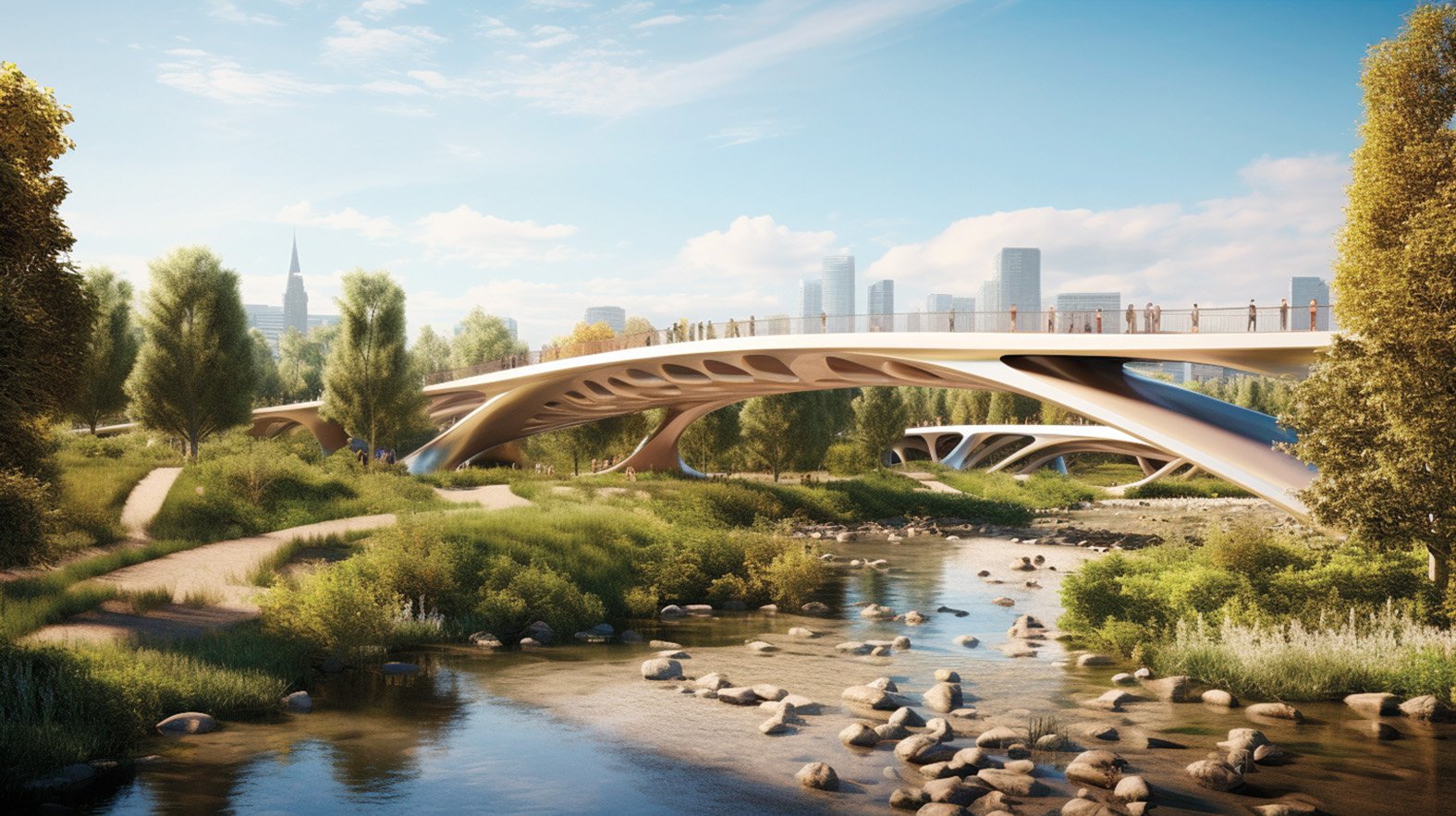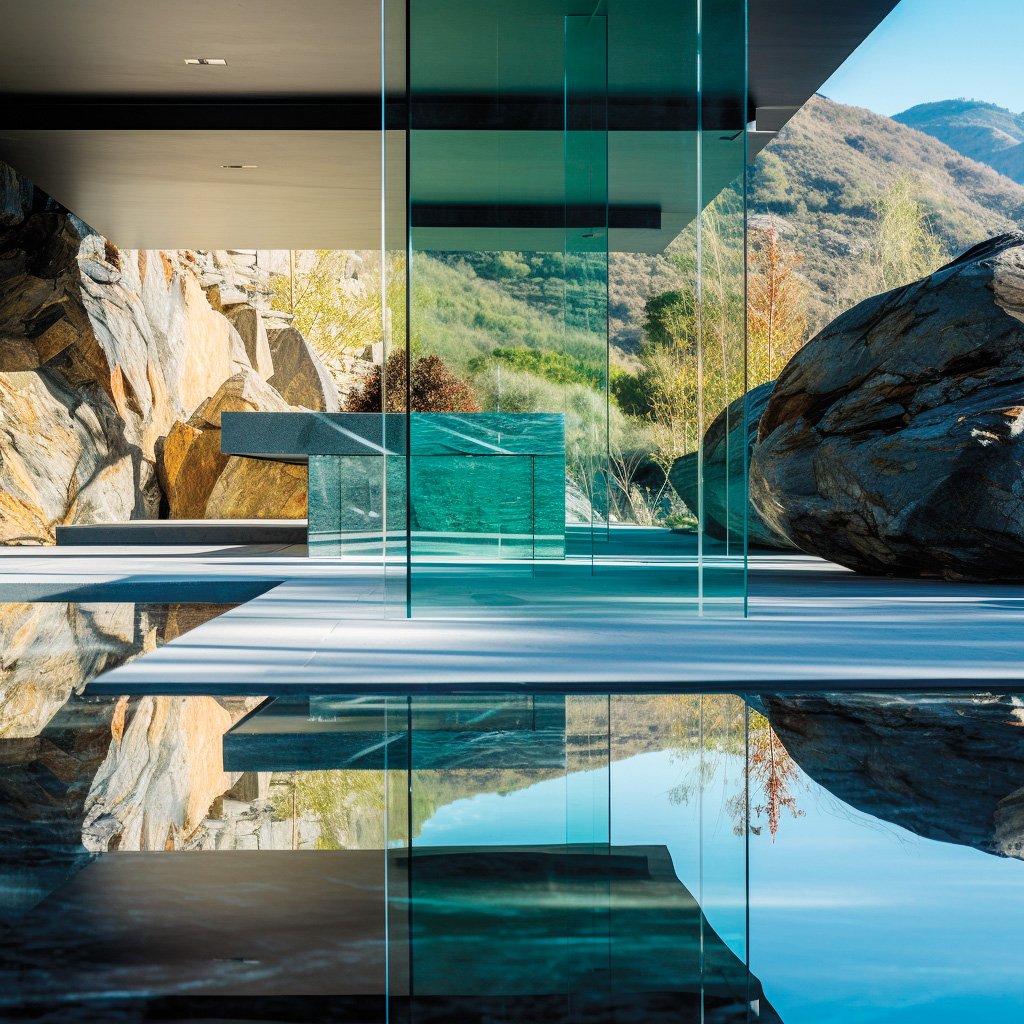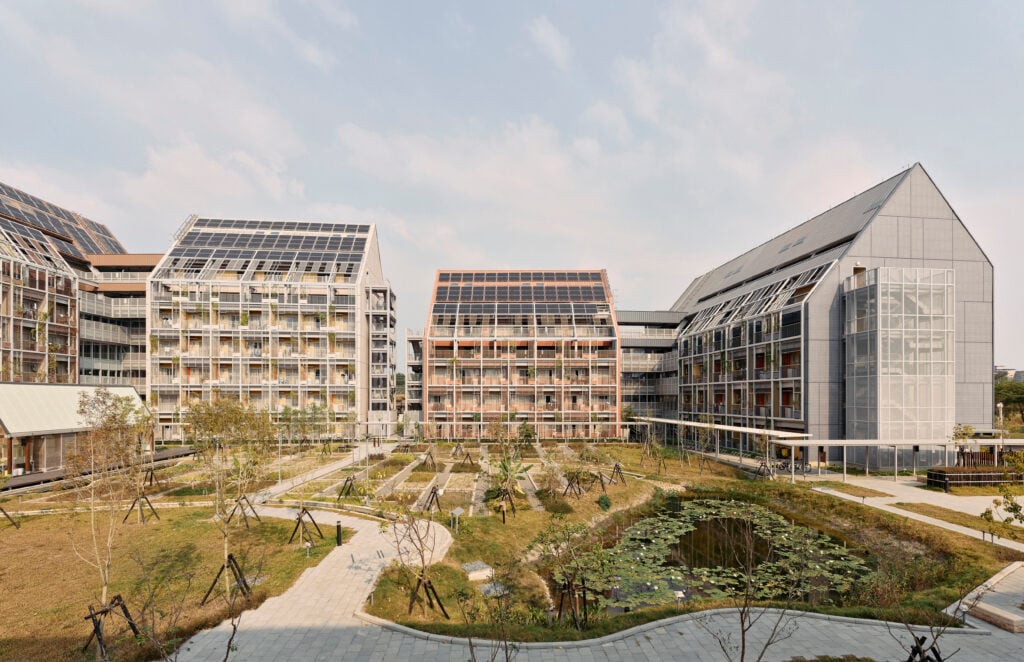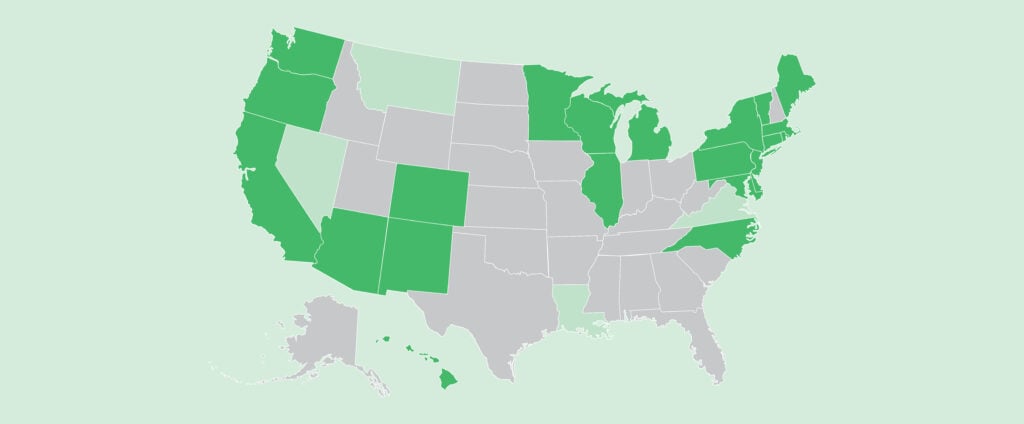
April 10, 2024
The Landscape Architecture–AI Buffer Zone
Is cheaper design, even if it’s available to a wider audience, a good thing?

Environmental scientists and ecologists have been using machine learning much longer than landscape architects. But landscape designers can complement this work by contributing AI visualization tools to illustrate projects for broad public audiences and policy forms, says Phil Fernberg, director of digital innovation at OJB. “We are expertise siloed,” he says. “We need to partner with these folks and build something together that would have never otherwise been built.”
“Unlike other tools that are really complex to operate, like BIM software, AI is not hard for the layperson to operate,” says landscape architecture professor Aidan Ackerman. “There is no skill development needed.” Absent this baseline layer of technical skill, and eventually the strata of skills above it, design could become a purely curatorial process, selecting options presented by AI, de-skilling the workforce. Pictured: Midjourney renderings by Jeff Cutler.
And while AI might be able to understand the relationship between a photovoltaic panel and a power grid, unpacking how a tree (responsible for shade, habitats, the nutrient cycle, phytoremediation, evapotranspiration, and more) works within a landscape is beyond its grasp.
As one of the smallest, most misunderstood design professions, stuck in the middle of the Venn diagram between much larger and more visible fields, landscape architecture is often isolated (or shielded) from disruptive technological change.

Landscape architects sit in the midst of ecology, gardening, architecture, botany, planning, and environmental science. They’re a woolly and heterogeneous bunch that might be hyper-focused on planting patterns in neighborhood parks, the biodiversity of thousands of acres, or the stormwater capacity of concrete infrastructure. This diffusion makes them difficult for any single technological change to consume. As such, there have been very few digital tools created specifically for landscape architects.
Instead, landscape architects have been making their own tools and adapting existing ones to their needs. Anya Domlesky is the director of research at SWA Group and runs the XL Lab, where SWA landscape designer Shimin Cao and University of Southern California lecturer Xun Liu trained algorithms on Google Street View images of Houston, so that it can analyze and score streetscapes for walkability, bikeability, tree cover, greenscapes, and more. The eventual goal is for AI to generate streetscape designs. With SWA associate Liqiu Xu, XL Lab is also using ChatGPT to devise planting pairings, generate site analysis and precedent studies, and create profiles for potential visitors to a real park site. Jeff Cutler, founder of Vancouver landscape architecture firm space2place design, has been using Autodesk Forma, which uses AI to define microclimates on project sites.
Given the complexity and dynamic nature of living matter, Zihao Zhang, landscape architecture professor at City College of New York, advocates for using AI to develop landscape design not as a discrete product but as a process, a “subscription basis” for “continuous engagement with the land,” he says. He’s interested in using AI to “co-produce” outcomes, he explains, and he feels that handing agency over to AI will allow it to solve problems in ways humans never considered. This is, of course, diametrically opposed to how AI is being applied in landscape architecture today. The adoption of image generation platforms like Midjourney and DALL-E threatens a “proliferation of the picturesque” that reinforces a vision of landscape architecture as a predominantly aesthetic practice, Zhang says.

And while these meta-collage images, with their surreal technical facility and stilted recapitulation of popular culture, are nowhere close to explaining themselves as something that could be built or installed, academics say we may be only a few years from being able to plug in material, dimensional, and programmatic constraints in AI and get something back we can actually make. Any delay beyond that will be the likely incursion of landscape architecture’s awkward marriage to digital tools. Likewise, what’s keeping us from Design Skynet is similarly rooted in the biotic world. To create buildable plans, AI will need plan and section drawings to train on, which, as often-proprietary information, exist in hard-copy paper plans, locked up in file cabinets. They’ll have to be hauled out, scanned, and uploaded. “That’s not low-hanging fruit,” says Domlesky.
As the director of digital innovation at OJB, Phil Fernberg is using whole-language text models to develop planting plans, and using parametric design engines to organize them in space. From there, the goal is to connect this design to the material supply chain and vendors. When this process is applied to residential projects, Fernberg foresees a broad consumer push in what is already the largest single segment of the landscape design industry. “How do we connect a bunch of readily available data sets to advance design and help it reach more people than it ever could?” he says. “Because there’s way more people that own homes and landscapes than there are landscape architects to help them, or that they can afford.”
Automated landscape design sounds like an unimpeachable deal for small clients. For labor, there’s the eternal question of who collects the surplus that results from these new efficiencies. Is cheaper design, even if it’s available to a wider audience, a good thing?


Probably not, says Neil Leach, architecture professor at Florida International University, who studies AI in design. “The main driver of change is going to be economics. What’s cheapest?” he says. “The professions are going to be eroded by these new technologies. Because it gets easier to do these things, the temptation is to drop fees. It’s going to reduce the amount of money coming into the profession.”
AI could collapse the landscape architecture labor market, and its system of occupational licensure with it. Of course, Leach reminds us that AI is “a tool. It has no agency. It’s the unscrupulous employers who are looking to cut costs.”
“The elephant in the room is that we live in a capitalist society,” says Zhang.
The best-case scenario for landscape architecture is that its idiosyncrasy and maladjustment give it time to join and build coalitions that can force AI in design to respond to the needs of people, not markets. “The way we receive AI is not going to fit our profession in any way,” says Ackerman. “I think that might be our advantage here.”
Would you like to comment on this article? Send your thoughts to: [email protected]
Latest
Projects
Taisugar Circular Village is a Model Case Study for Circular Economies
The Taiwanese project by Bio-architecture Formosana claims to be the first residential village in the country to be integrated within a circular economy.
Viewpoints
3 Sustainability News Updates for Q1 2025
Local laws, easy-to-access tools, and global initiatives keep the momentum on green building going.
Viewpoints
Women Architects Struggled to Find a Home Within Modernism
American women offered a counterpoint to the boys club of the International Style, a new book says.





